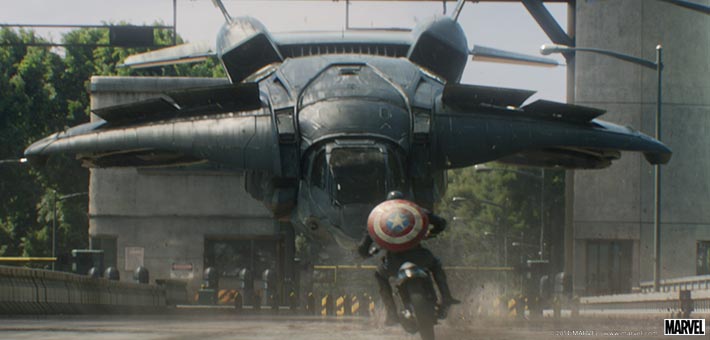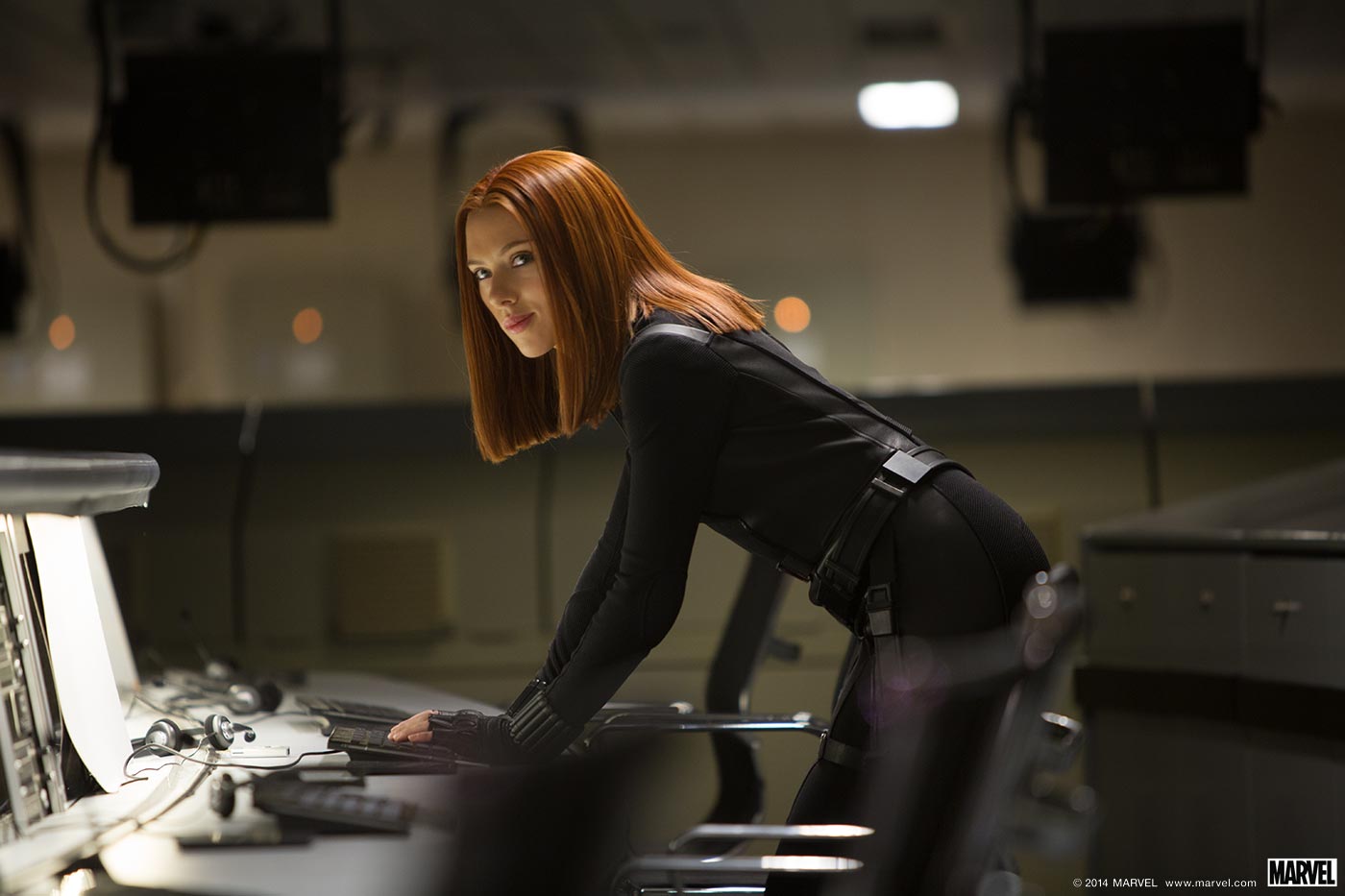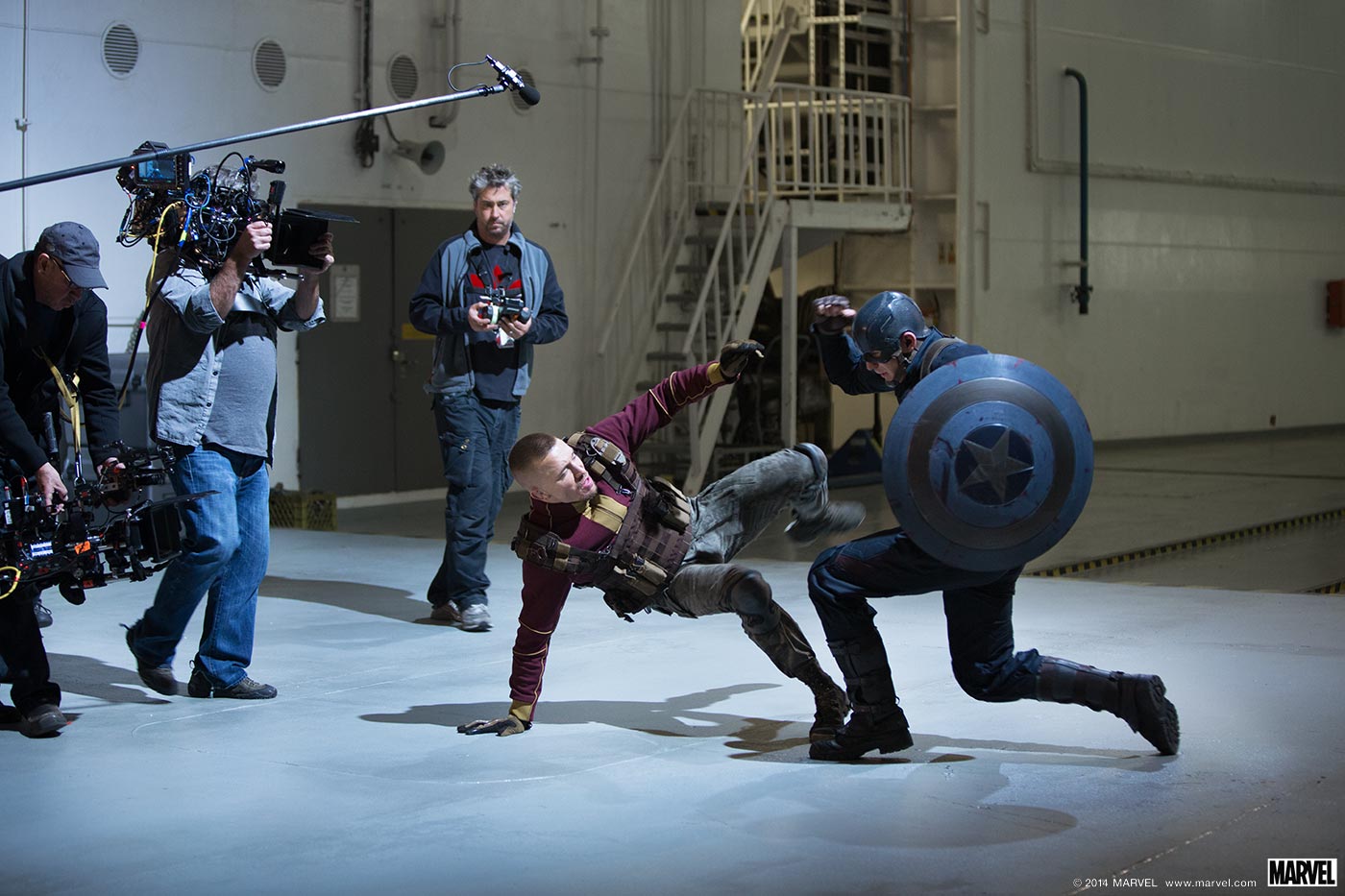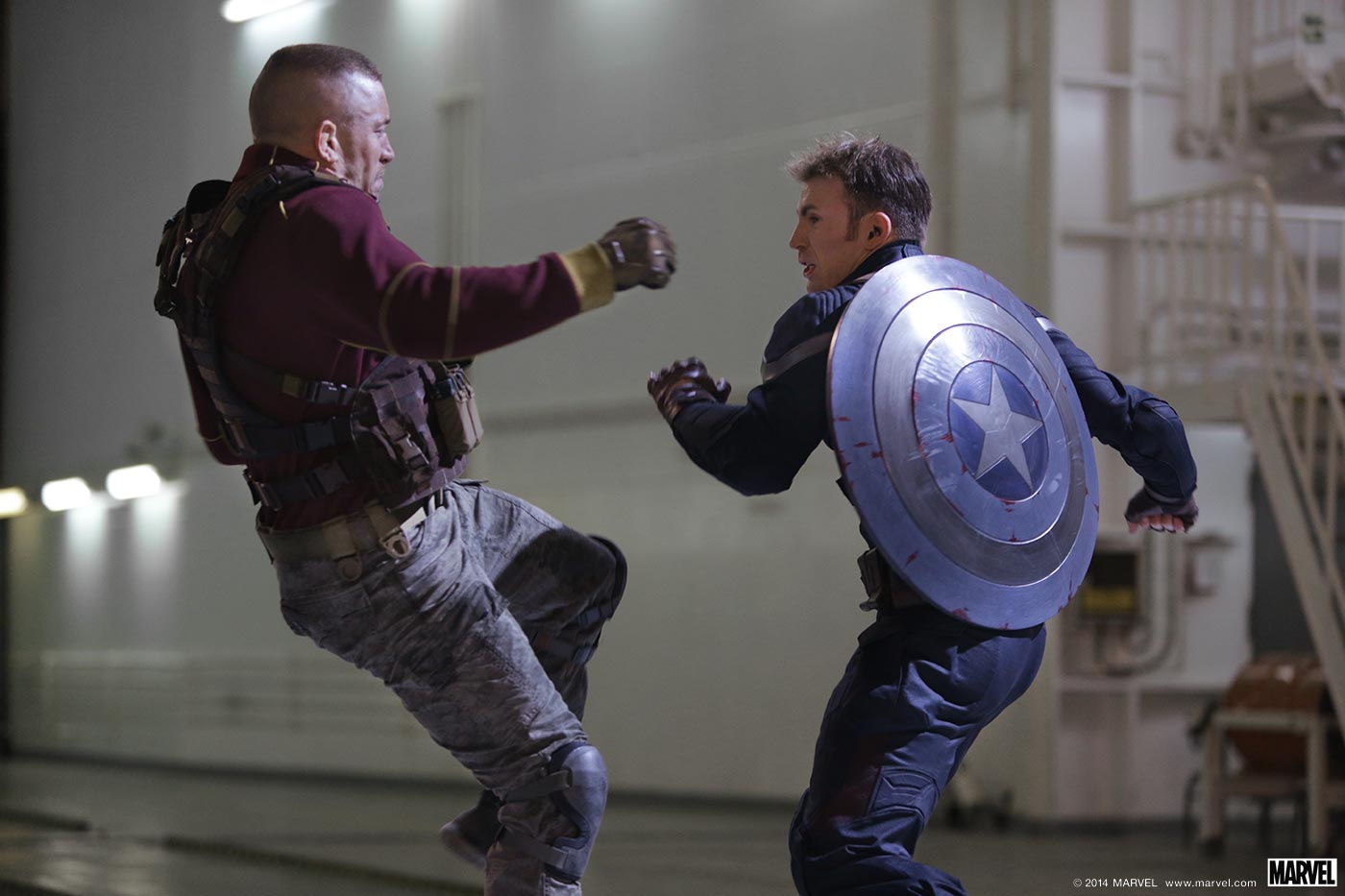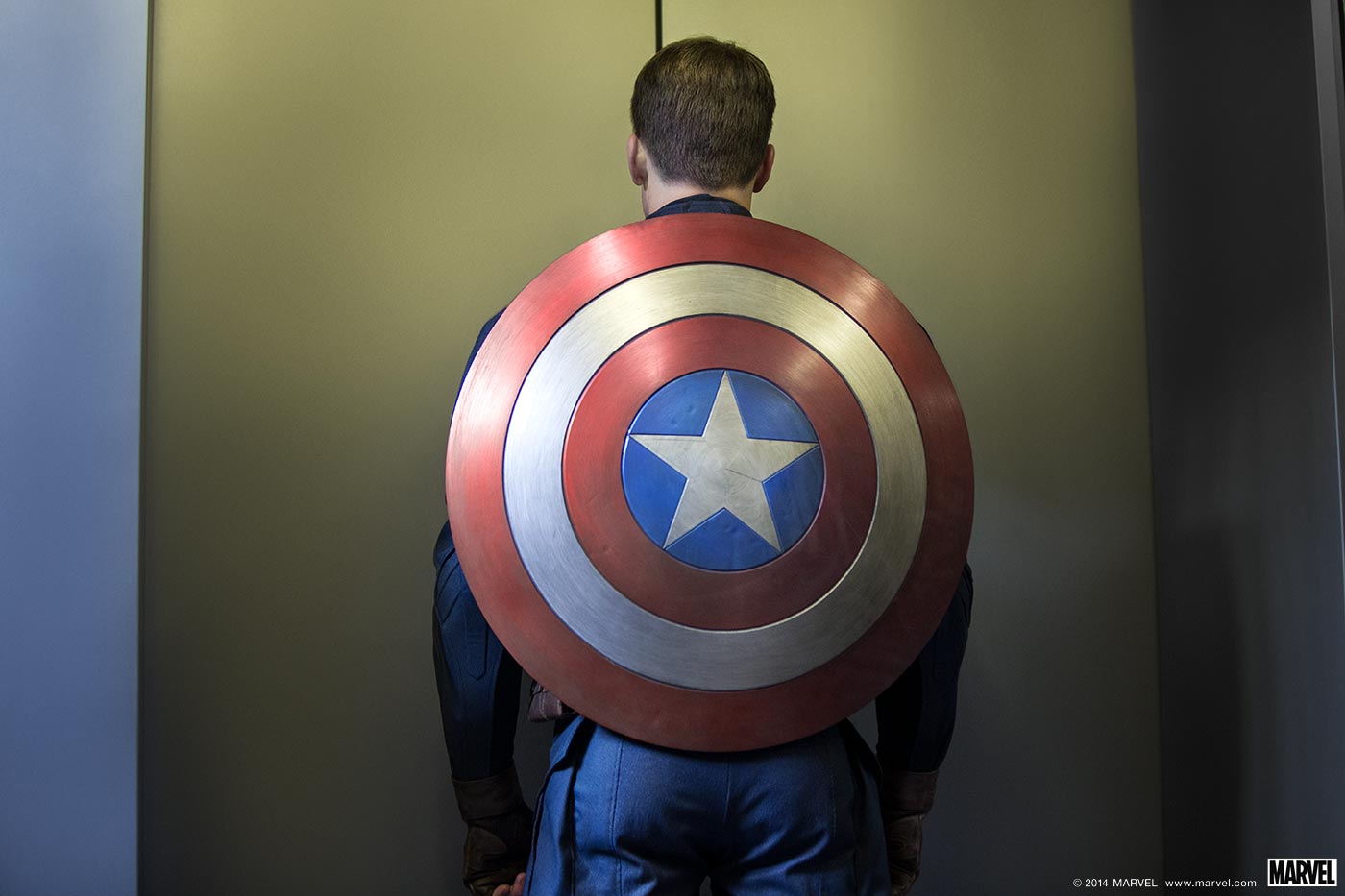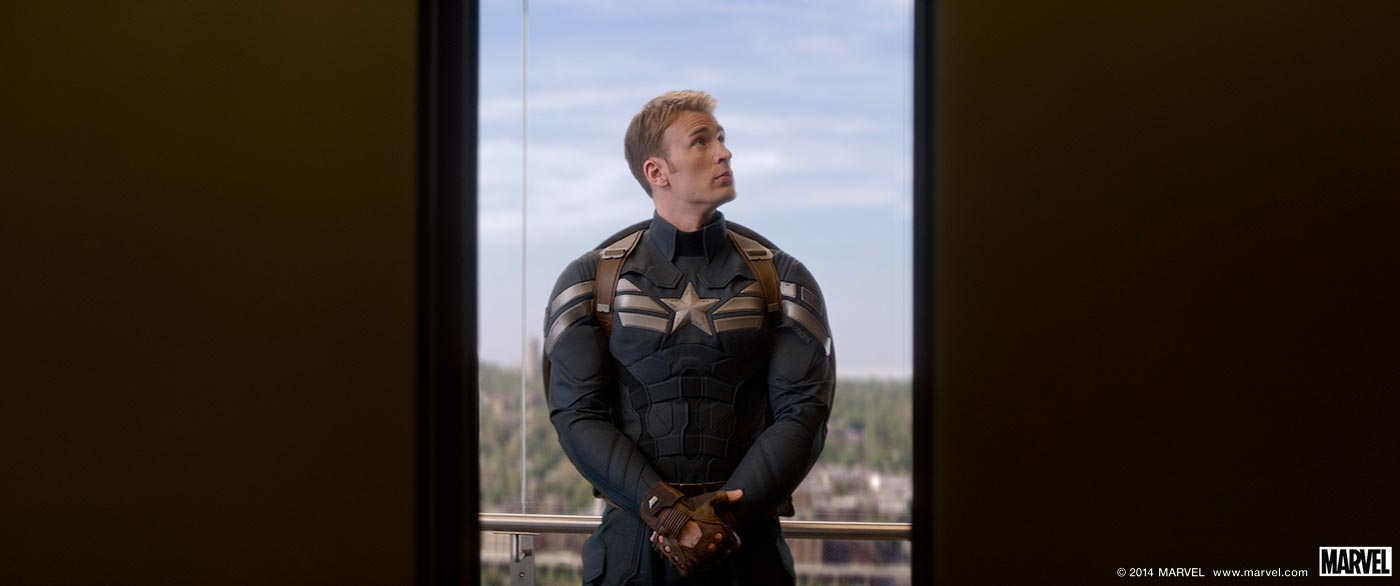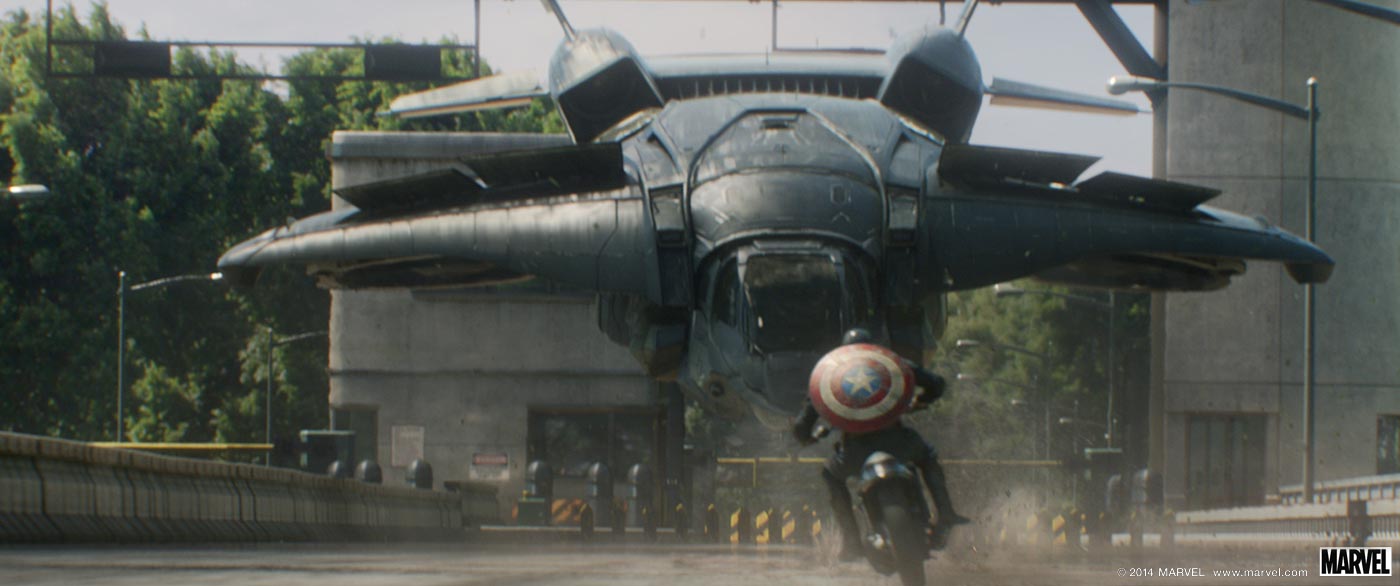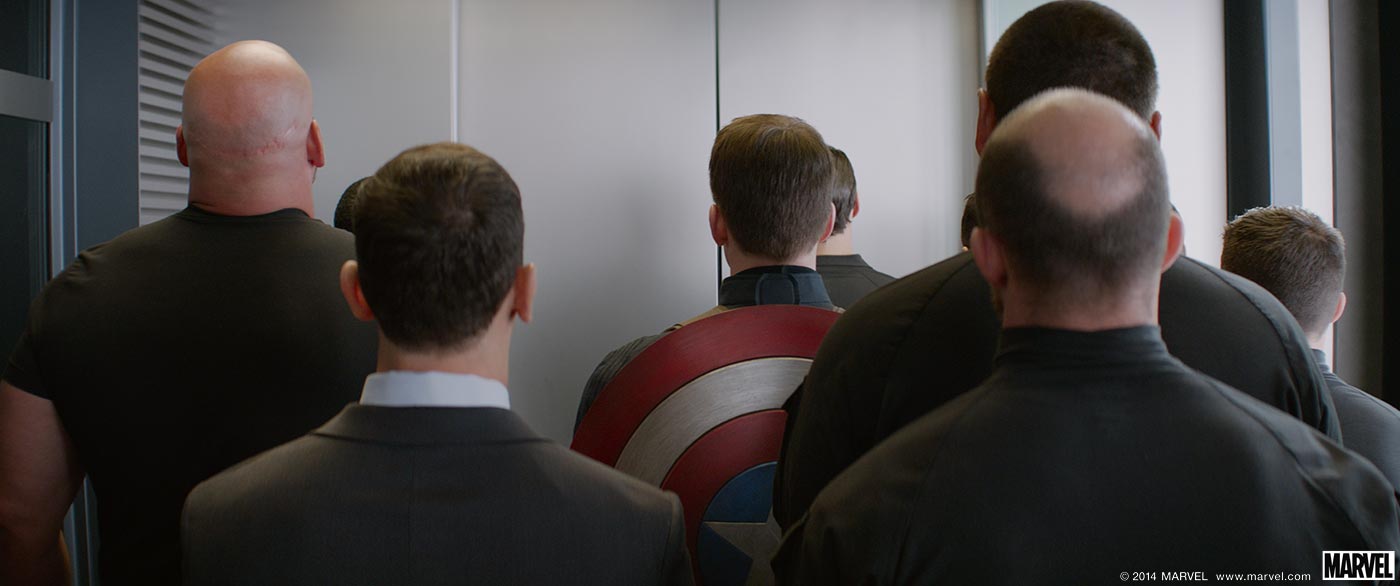Last year, Bryan Grill explained to us in details the work of Scanline VFX on IRON MAN 3. He is now back in the Marvel universe with CAPTAIN AMERICA. THE WINTER SOLDIER.
How did you approach this new Marvel collaboration after IRON MAN 3 and THE AVENGERS?
Collaborating with Marvel was pretty much the same as IRON MAN 3: Dan Deleeuw was the 2nd unit vfx supervisor on that film, and he became the overall vfx supervisor on CAPTAIN AMERICA 2: THE WINTER SOLDIER. He was joined by vfx producer Jen Underdahl and vfx production manager Lisa Marra (also from IRON MAN 3). So there was some strong continuity. It was great working with familiar faces including 2nd unit VFX supervisor Geoff Bauman, with whom I had previously worked years earlier at Digital Domain.
How was your collaboration with directors Anthony and Joe Russo?
We mostly worked directly with Dan and Jen at Marvel. I met both the directors on the shoot and would show works in progress but mostly we were collaborating with the Marvel vfx team.
What was his approach about the visual effects?
Dan Deleeuw had talked with the Directors early on and it was agreed that they wanted a gritty, action packed 70’s espionage type of movie. Much like THE FRENCH CONNECTION and THREE DAYS OF THE CONDOR. This opened up a lot of possibilities of how the movie would be shot and how it would look in the end.
How did you work with Production VFX Supervisor Dan DeLeeuw?
Having worked with Dan on IRON MAN 3 was definitely a plus. Dan was there when we were doing the work for the IRON MAN 3 Comic Con shots. He and vfx Supervisor Chris Townsend would be there shaping the look and feel of how they wanted the work we were doing for film. So having a previous working experience made the work on CAPTAIN 2 much more enjoyable. We were both very in sync in terms of how the work we were doing should look and made sure we were helping tell the story in the best way possible.
What was your role on this project?
I was overall VFX Supervisor for Scanline VFX. We delivered about 450 of the film’s 2,500 shots. We did a pretty cool, challenging sequence, where the Quinjet chases Steve Rogers as he flees on his motorcycle, as well as an Elevator Fight with extensive cg environment work, some fight enhancements, and some digital Steve Rogers shots. The opening sky dive and Lemurian Star hostage rescue was us, too, as well as lot of what you might call invisible “supporting visual effects.” We also supported the Marvel visual effects team on set both in Los Angeles and Cleveland. This included set photography,textures and set data wrangling.
What are the sequences made by Scanline VFX?
We created the elevator and the environment for what was called The Elevator Fight sequence. We added glass and reflections and removed unwanted set reflections. This was a very roto intensive sequence which included special fight enhancements and the added truncheon effects. A 2 1/2 D and sometimes full 3 D environment were used recreating parts of S.H.I.E.L.D. headquarters called the Triskellion and the Arlington and DC BG. This also included shots of a digital Captain leaping out of the elevator and falling to the atrium below. This sequence required close up 3d renders of the double pane glass elevator, the Concrete Triskellion and the glass roofed Atrium. Simulations of Captain crashing through both the glass elevator and atrium glass roof were important for making this sequence feel realistic.
Once Captain America falls through the Atrium he gets on his motorcycle and tries to ?escape from S.H.I.E.L.D. headquarters but must cross the bridge and security checkpoint first. As he speeds across the bridge he is attacked by a Quinjet trying to stop him. This one on one battle has Captain zig zagging trying to avoid gunfire from the Quinjet. This is when Captain throws his shield and takes out one of the Quinjet’s vtol engines. Captain puts his front brakes, on catapulting himself onto the top of the jet. As the jet continues to fly out of control Cap flips over and jams his shield into the wing to keep himself from falling off. He then uses his shield again to penetrate the engines and he leaps to safety as the Quinjet crashes onto the bridge.
The other sequence we worked on was the satellite launch ship called the Lemurian Star. In this sequence we had full CG jet flying in an Indian Sea environment and cg digital double of Captain sky diving and landing in the ocean next to the ship.
The next level off work was building a cg Lemurian Star ship based on the real ship called Sea Launch and connecting the real launch pad called the Odyssey. The rest of the work consisted of fight enhancements, shield enhancements, digital Captain America doing Parkour, and lots of set extension.
Can you describe to us one of your typical day?
A typical day at Scanline consisted of an early morning production meeting with LA and Vancouver going over daily,weekly and monthly goals. We would typically have 3d dailies before lunch and 2d dailies in the afternoon. Client cineSync’s 2 to 3 times a week were the norm.
How did you approach the opening sequence in the Indian Ocean?
We approached the opening sequence by splitting up the work based on the different sub-sections of the environment in the sequence. First we had the external shots which were all CG including clouds and water. Than we had the interior shots which consisted mostly of adding clouds and screen graphics designed by Cantina Creative. We had the Lemurian Star full cg ship,extensions,water,sky,and cloud environments, Captain America fight and shield enhancements. The kitchen where they held the hostages, engine room rocket launch bay, and the control room.
Can you explain more about the Ocean creation?
We used our in house proprietary software Flowline for all our water Simulations and rendering. The cloud environments and elements were created with Flowline as were the heat trail/exhaust FX.
How did you created the beautiful free fall shot of Captain America?
The free fall shot of Captain America started with looking at skydiving material from Barrel of Monkeys sequence in IRON MAN 3. Dan Deleeuw sent us raw footage which depicted the different beats of how they wanted Captain America to move and look throughout the shot. We than went into an iterative process getting the timings to body language to work. It was then that we added cloth simulation to his Stealth suit adding a more realistic layer to his free fall.
How did you create the Lemurian Star?
The creation of the Lemurian Star was first started with thousands of pictures taken a week before and the week during the shooting on the Sea Launch. Along with photography, Gentle Giant Studios provided Lidar point cloud data of the actual Sea Launch. Because the ship was on the water it was very tough to get good scans either from ship to ship or land to ship. The Gentle Giant technicians did a very good job of assembling all the pieces needed to give us a very good base for the final modeling and design. Once we flushed out the tail end rocket launch pad addition to the Sea Launch we continued with the final modeling and textures for the effects shots.
Can you tell us more about your work on the Elevator Fight sequence?
The elevator fight sequence was the first sequence shot for the movie. They had an elevator on a green screen stage with two large light boxes with a moving light source through it to give us the feeling of light and shadow helping with believability of the static elevator moving down. The first few days were shot inside the elevator with the first layer of glass in. The rest of the shoot was filmed without glass. So throughout the sequence we were either taking out unwanted reflections or completely adding new reflections using the plate, our CG elevator and witness camera material. Lots of roto and color correction were needed to make the elevator feel like it was on the Corner of the building overlooking the Triskellion and the rest of the DC environment. The CG elevator was rendered out into elements which were then brought into Nuke so the compositors had all the freedom they needed to create new glass, cracked glass, reflections, shadows and the outside steel cage of the elevator.
For our first delivery we had to produce 90 elevator shots in 3 weeks for the CAPTAIN AMERICA 2 sneak peek at Comic Con. We had to put the DC environment and do as much reflection clean up as possible. Even though there was still a lot of detail work that needed to be done to complete the final look, we were very happy about the work we had done in such a short time. Marvel eventually used that fight sequence in a trailer at the head of THOR: THE DARK WORLD.
Captain America is confronted with Quinjet outside the Shield. Have you created previs for this sequence?
The previs for the leap sequence where Captain America is confronted with an outside shield was done by previs company Proof. What we ended up doing was creating technical previs which allowed myself and 2nd unit vfx supervisor Geoff Bauman to help set up the Cameras on location in Cleveland, Ohio, with the 2nd unit Director and DP. By measuring the distance that Captain America traveled. we could set up the speed of the camera and positions.
We also had two paint poles with a string the width of the gave us a needed visual for framing shots with the Quinjet in them. The same process was done for the Los Angeles shoot on top of the Quinjet buck giving a starting point that matched the previs framing.
Can you tell us in details about the creation of the huge environment outside the Shield building?
The environment outside the S.H.I.E.L.D. building was a collaboration with visual effects company ILM. They had the end battle sequence so all the helicopter plates and photography were shared between companies. This also included the Triskellion building and the Theodore Roosevelt Bridge, which was the asset in our Leap sequence.
Have you shared assets with other studios especially for the Quinjet?
Scanline VFX shared elements with multiple companies. The main assets we used were shared with ILM. We would take their assets and ingest them into our pipeline and would need to make changes to the model and shaders, depending on our needs, required resolution, view through camera, etc. The Quinjet asset was very much like the asset we previously worked with on THE AVENGERS but it had some modifications to the wings.
Can you tell us more about its creation and destruction?
The creation and destruction of the Quinjet was specific to our shots in the Qunjet Leaps sequence. We had close up shots of the Quinjet including the Vtol being damaged and then the final crash at the end on the bridge. We had the Quinjet and the bridge destructing during the crash shot. This was created by rigid body dynamics which gave us the destruction of the Quinjet and bridge. Also Flowline was used for all the smoke and fire coming off the damaged ship.
What was the biggest challenge on this project and how did you achieve it?
A big challenge was the Elevator Sequence. We started with a minimal, static GS elevator set, then had to create an extensive, photoreal, fully CG environment around that – and to create the sense that we were actually in an elevator moving through this vast Triskellion complex. I’m quite happy with how we ultimately nailed all the lighting, reflections, and textural subtleties that made that elevator and the surrounding environment feel totally real. Including the exterior Bridge and DC environment, which we had to create as a full 3d environment from photos and helicopter footage, including added cg moving trees and cars.
Was there a shot or a sequence that prevented you from sleep?
This show ran very smoothly working with both the Marvel team and our internal Scanline teams. So there were not too many sleepless nights.
Which offices of Scanline VFX have worked on it?
Scanline VFX studios in Munich, Vancouver and Los Angeles all worked on the show.
What do you keep from this experience?
The experience I had on the show was fantastic. Not only was working with Jen Underdahl, Dan Deleeuw, Victoria Alonso, and the rest of the Marvel team amazing, but also having the chance to work with a bunch of new artists at our Vancouver and Los Angeles locations really made it a wonderful time.
How long have you worked on this film?
I started working on CAPTAIN AMERICA: THE WINTER SOLDIER on April 1st 2013, just five days after delivering the final shots on IRON MAN 3. The last shots were finaled in the middle of February 2014, for a total of 10.5 months from start to finish.
How many shots have you done?
Scanline was responsible for delivering approximately 450 visual effect shots.
What was the size of your team?
Our team size at Scanline covering 3 different offices was around 90 artists, supervisors and production staff.
What is your next project?
I am currently working on SAN ANDREAS for director Brad Peyton, which hits theaters June 5, 2015.
A big thanks for your time.
// WANT TO KNOW MORE?
– Scanline VFX: Official website of Scanline VFX.
© Vincent Frei – The Art of VFX – 2014

